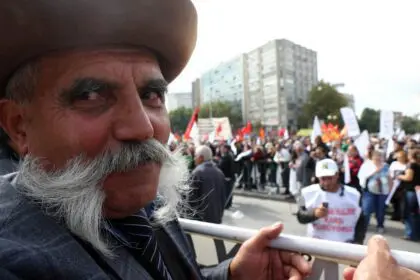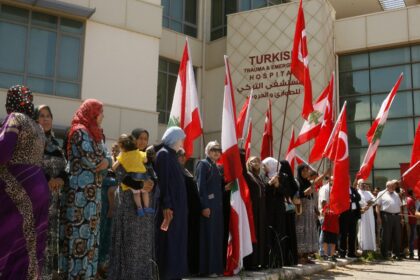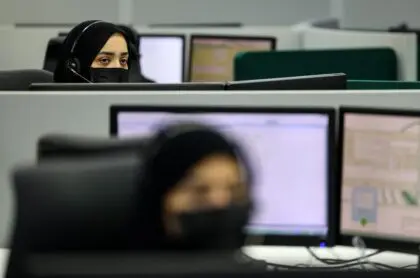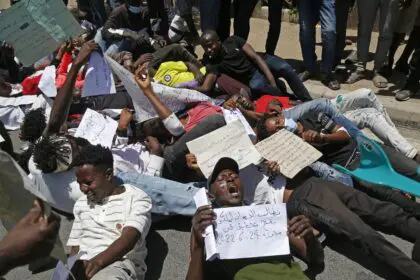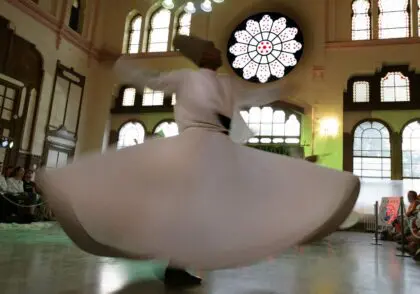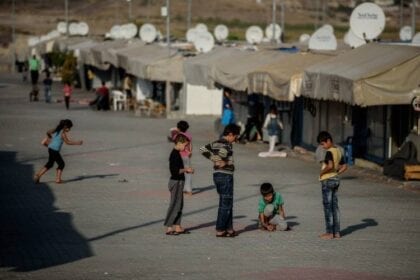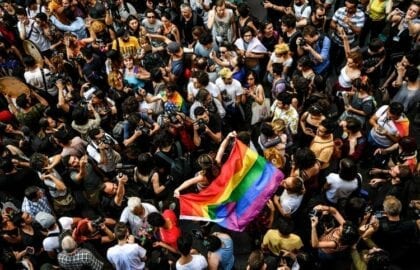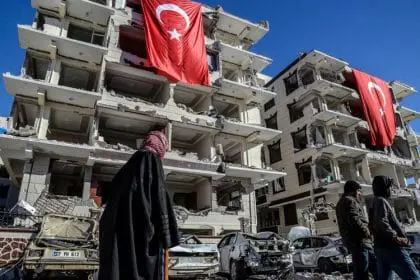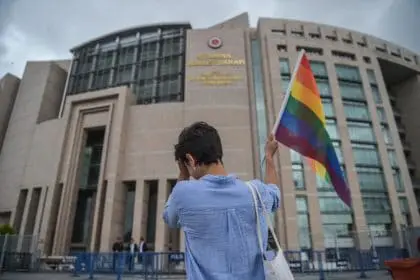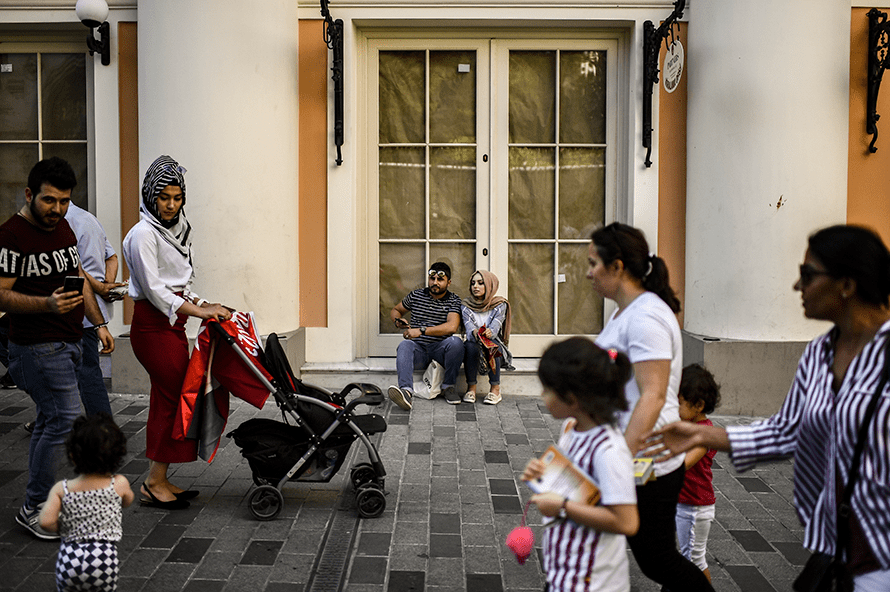
Introduction
In the course of the 20th century, Turkey witnessed sweeping social and economic reforms. Turkey has transformed from an underdeveloped, rural society into a predominantly urbanized country experiencing rapid economic growth. The social infrastructure, however, has not kept pace with these economic changes. In many respects, Turkey remains a conservative society.
In the political arena, this development led to the rise of the Islamist AKP in 2002, which is engineering a ‘re-Islamization’ of society and state through reforms. Strained relations with the secular, highly urbanized segment of the Turkish population are the result – members of society who for decades set the tone in Turkey, bolstered by the official state ideology.
Human Development Index
The Human Development Index of Turkey increased almost 50 percent from 0.5 in 1980 to 0.7 in 2012. Despite this impressive increase, however, Turkey, which is now one of the G-20 nations, is ranked 90th globally in HDI. Life expectancy is 74.2 years. Adults enjoy an average of 15 years of schooling. The GNI per capita (PPP) is USD 10,830.

Clans and Communities
There are few dynasties or clans in Turkey, but there are many Turkish, Kurdish, and Arab tribes. The war in Kurdistan – fuelled by the central government’s formation of rural militias (köy korucuları, village guards), whose numbers increased to 100,000 at the turn of the 2000s – contributed to the vitality of the tribes. These ‘guards,’ mostly of tribal origin, earn three times the minimum wage of the militia members and are armed by the state, which sometimes forces them to form auxiliary forces. They have been involved in human rights violations, drug trafficking, and gun crimes. They have contributed, indirectly, to the militarization of other tribes, some of which have joined the Kurdistan Workers’ Party (PKK). The following examples show the central place a tribe may hold in a local framework: the Bucak, currently led by Sedat Bucak (born 1960), control a significant part of the economy in the Siverek region, including the distribution of petrol. Being closely related to Süleyman Demirel, President of the Republic in the 1990s, Bucak led an army of 10,000 men composed of clientelist groups. He was the sole survivor of a car crash in 1996, near the town of Susurluk, where Abdullah Çatlı (1956-1996), an ultra-rightist militant wanted for multiple murders and Hüseyin Kocadağ (1944-1996), a senior police official, were killed. Conversely, most of the Hakkari tribes actively support the Kurdish Peace and Democracy Party.
However, the impact of tribalism must be put into perspective: the emergence of Kurdish megalopolises, populated by new, highly mobilized, and politicized urban generations with no memory of the rural context, has considerably weakened tribal structures. Fighting for the ‘Kurdish cause,’ the first condition for entry into politics, has driven many young people and women into the Kurdish front, making allegiances and tribal solidarities ineffective in an urban setting.
Family Structure
Traditionally, family structures in Turkey favoured a combination of extended families and nuclear families to promote a patriarchal social order in which maleness and age were the main sources of authority. Domestic environments were gendered and were the ideal place for the confinement of females. The initiation of children into adolescence and adulthood followed the gendered division of roles. It was largely in line with the rites of passage observed in most Muslim societies (teaching the Koran to boys five to six years old, separation of the sexes from age seven or eight, obligation to fast during Ramadan before the age of twelve, and the ‘negotiation’ of a marriage decided by the parents when the child is between fifteen and eighteen years of age).
According to a report issued by USAK in 2012, 31.7 percent of women and 6.9 percent of men married before the age of 18, 58.7 percent of women, and 58.2 percent of men married between 18 and 24. 31.9 percent of women and 28.0 percent of men married according to the arranged marriage model. In comparison, the marriages of 36.2 percent of women and 24.8 percent of men were decided solely by the parents. 85.9 percent of marriages were contracted in the civil or religious form, although the latter has had no legal standing since 1925. Religious ceremonies are, however, often considered more important in the community. In 16.8 percent of the cases overall (and 23.5 percent of the cases in rural areas), the families of married couples paid the süt parası (‘milk money’), or what anthropologists call ‘bride price’ (bașlık parası and qalın in Kurdish). Marriages between relatives constitute 20.9 percent of all marriages (4.8 percent in Western Marmara, 15.3 percent in Istanbul, and 40.4 percent in the South-Eastern Anatolia region). Although there are no reliable statistics, the rate of polygamy, which has been prohibited since 1925, is generally low. However, it may affect up to 5 percent of the women in cities such as Diyarbakır and Urfa. Of the sample interviewed in the above-mentioned survey, 82 percent do not drink alcohol, 44 percent do not read books, and 77 percent do not go to cinemas or theatres. They consider the ideal family size three children. Nuclear families are spreading (80.7 percent, with an additional 6 percent of single households), and the couples are generally stable: only 4 percent remarried and 0.3 percent married a third time. According to Family and Social Policy Minister Fatma Sahin, the divorce rate increased but stood at only 1.6 percent in 2012.
The historically high birth rate dropped from 6.8 percent in 1976 to 2.37 in 2001 and 2.3 in 2008, thus approaching a critical threshold for maintaining the population. This trend will presumably be affected by the pro-natalist campaigns supported by Prime Minister Recep Tayyip Erdoğan, who wants to criminalize abortion – except in urgent medical cases – as a way of dealing with the ‘abortion war,’ which, he claimed, was about to be declared in Turkey.
Women
According to recent estimates, 30 percent of the labor force women are wage earners, added to women in the informal sector who work without pay in family businesses or agricultural production. The situation of women in Turkey is a paradox that cannot be explained solely by patriarchal family structures or the status of women in Islam, or, conversely, by the emancipation of women under the Kemalist state: women are omnipresent in skilled occupations, at a rate of 30-40 percent (e.g., doctors and scientists), but they are mostly absent from the middle- and lower-class workforce. Class distinctions explain the over-representation of women in skilled occupations – wealthy families send their daughters to prestigious educational institutions – or by a ‘cultural capital’ built by personal commitment, making it possible for some women to go far in their education; this allows them to refuse early marriage imposed by the parents and garner the professional resources that enable them to enjoy their autonomy. Arranged marriages are for those women who do not inherit or fail to acquire this cultural capital.
Domestic violence targets especially, but not exclusively, women. Surveys show that the legitimacy of violence against women is largely internalized in society, even among women. The figures are alarming: the Istanbul branch of the Human Rights Association reports that 4,190 women were killed between 2005 and 2009, some of them as victims of ‘honor crimes.’ Only 500-600 rape cases are officially reported each year, but this figure – even leaving aside cases of incest – is far from reflecting the reality of this sensitive issue.
Between 1993 and 1995, the country was led by a female Prime Minister, Tansu Çiller (born 1946), a hard-line supporter of the state’s position on the Kurdish issue, which was respected and supported a cohort of male generals. The Turkish Industry and Business Association, representing the bourgeoisie of Istanbul, is chaired by a woman, Ümit Boyner (born 1963). However, aside from these symbolic figures, there are few women in politics, even if their numbers in Parliament are increasing (13 in 1995, 23 in 1999, and 24 in 2002). In 2007, there were 50 women in Parliament (9 percent of the total) and, in 2011, 78 (14 percent), including eleven belonging to the Kurdish List represented by only 35 deputies (men and women), six of whom are in prison.
These issues require us to reconsider women’s issues in Turkey. In the words of Mehmet Emin Yurdakul (1869-1944), a national poet, nationalism in the 1910s wanted to ‘place women at the heart of the country.’ According to Turkish sociologist Nazan Aksoy, the political power granted to women under Kemalism was limited: ‘Although the individual is the basis of Turkish modernization, what we ask of women is in no way to become an independent individual entity. (…) The main factor that threatens women’s autonomy lies in the fact that the nationalist discourse required for building a new nation was “masculine”‘. Sociologist Şirin Tekeli points in the same direction: ‘In his speech to women [Atatürk] strongly emphasized that women’s most sacred duty is maternity. Neither the Anatolian peasant women who are considered a model of “altruism” nor the elite working women could avoid becoming mothers. Thus, the Kemalist message became vague and even contradictory: to glorify the maternal role, it did not simply call for old traditions but also sought to strengthen them through ideological speech and practice. Women who were encouraged to abandon their usual role were required to lower their ambitions in the work environment so as not to surpass men.’
Although feminism in Turkey is politicized and polarized between several movements, from Islamist to socialist and from Atatürkist to Kurdish, it remains combative, particularly in the fight against violence against women. Many organizations, such as Mor Çatı (Purple Roof, a shelter foundation), serve as channels for women to express their demands and as a place of refuge and protection for female victims of domestic violence or other abuse.
Youth
According to 2011 data, half of the Turkish population (totalling 79,414,269) is younger than 29 years old.
The rapid decline in birth rate (to 2.3 in 2010) points to an aging population’s likelihood by 2040. At the turn of the 2010s, however, Turkey was one of the demographically youngest countries in Eurasia, which explains its obvious social, economic, and cultural dynamism. The numerical importance of young people – which can be explained by urbanization in recent decades, accompanied by improvements in social, economic, and health conditions and the provision of many services in rural areas – raises three issues regarding their social status, freedom, and political role.
First, it is clear that young people are largely deprived of the means of livelihood and autonomy: according to the Turkish Statistical Institute, whose reliability is questioned, unemployment affected only 18.4 percent of youth, compared to 10.4 percent of the total population; other official sources, however, put the percentage at 26.
Second, it is clear that the social ultra-conservatism existing for several decades in Turkey gives young people little room for maneuver in some provincial towns and large parts of Istanbul and Ankara. Young people may have access to places that are more or less free of these restrictions – as on the famous İstiklal Avenue in Istanbul, Kızılay in Ankara, and Kordon (an esplanade) in Izmir – where cultural resources are abundant, socialization of men and women is permitted. Alcohol consumption is widely accepted, but access to such upscale areas requires financial resources beyond many young people’s reach.
Third, young people have played a leading role in politics since 1950; some resorted to armed struggle and paid a high price for their commitment. Since the 1990s, however, their direct political participation has become less forceful, even though more than 750 were detained in July 2012, charged with ‘terrorism,’ a term used to refer to any commitment – often more symbolic than organizational – to a left-wing party or to defending the cause of minorities.
However, in the Kurdish setting, youth, mobilized since their teen years, were the backbone of the Kurdistan Workers’ Party and political militancy. It is no coincidence that Kurdish politics, fuelled by years of struggle, have also witnessed an accelerated handover of power to the younger generation of people in their thirties.
Education
The high percentage of people in the 0-24 age group makes education an important political, social, cultural, and economic issue. The basic data on nursery school (non-compulsory), primary school, and first year of secondary school (compulsory) are as follows:
These figures show clearly the imbalance between the resources allocated to nursery schools (usually private) and other schools. There are also 3,357 high schools (3,837,164 students) and 4,193 cram schools, or dershaneler (up from 1,864 in 2001), which are private institutions constituting a veritable industry and generating a total turnover of USD 9.3 billion per year. Also important are the 139 universities (94 public and 45 private, called ‘foundations’) attended by 2,532,384 students (of whom 1,090,900 are women) and in which 100,000 university lecturers (including 13,622 professors and 7,360 docents, i.e., assistant professors) teach. The YÖK (Yüksek Öğretim Kurulu, Higher Education Council), which has close links with the central government, plays a decisive role in the management of the universities.
Post-Kemalist Turkey remained the scene of a religious war between the conservative parties and the Kemalist camp, even though both agree on the importance of Turkish nationalism at all levels of education. From 1950 to 1990, the main educational issues were preparing the religious education curriculum for non-religious schools and establishing schools for training imams and preachers (imam hatip schools). These have often led to conflicts between the military and civil governments. The penultimate battle occurred under the Islamist government of Necmettin Erbakan, when the National Security Council, which was the main military body, imposed compulsory education for an uninterrupted period of eight years, thus preventing access to the imam hatip schools, whose diplomas were no longer legally equivalent to other national diplomas. The response came fifteen years later, in 2012 when the government of Erdoğan adopted the 4+4+4 system ( four years of primary education at the first level, four years of primary education at the second level, and four years of secondary education), which allows children easy access to imam hatip schools and an equivalent diploma. These secondary-education institutions, which have graduated around 1,500,000 students over five decades, enrolled 290,000 students in 2011-2012.
The majority of the education system is public. Still, a large part of it is now run by the private sector, whether in the form of elite institutions at all levels (5,269 institutions) or within the Fethullah Gülen religious community’s school network. Under the military regime of 1980-1983, universities were also partly privatized. While the number of public universities grew significantly, 45 private universities opened their doors, many of which, such as Bilgi and Sabancı, highly integrated into global networks, have played a leading role in developing social sciences in Turkey over the last twenty years.
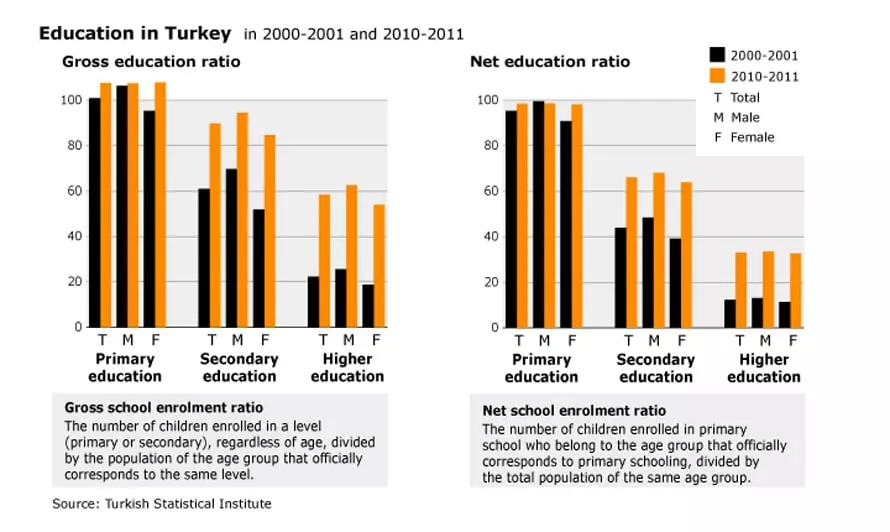
Health
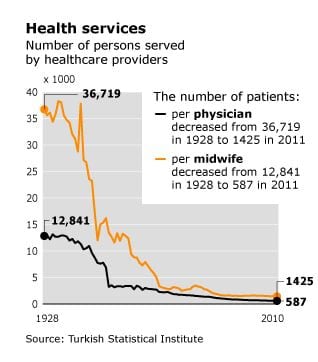
Two figures show the opposing trends observed in the health sector in Turkey: while life expectancy increased from just over 44 years in 1960 to 68.5 years in 2000 and 72.5 years in 2011 (70.61 for men and 74.49 for women), the infant mortality rate, although declining, remains one of the highest in the world: 18 per thousand and 100 per thousand in the western and eastern parts of the country, respectively. Preventive medicine has emerged only in the last fifteen or twenty years. According to the Ministry of Health, Turkey had one doctor and 1.3 nurses per 1,000 inhabitants (compared with 3.3 and 9.8, respectively, in the European Union) in 2011; its hospital capacity was only 2.3 beds per 1,000 inhabitants (5.7 in the EU), and it spent euros 671 per capita for health (euros 2,192 in Europe). Health expenses consumed 5.6% percent of GDP compared to an average of 8.3 percent in Europe. These macroeconomic data and the existence of a system to protect wage earners and contributors cannot conceal the difficulties faced by a population group in accessing medical care. Of the 1,439 hospitals (including 42 military hospitals) in the country, 490 are private, but they account for 75 percent of the health sector’s total expenses. The maternal mortality rate per 100,000 live births is 16 across Turkey but is 22.6 in the Southern Anatolia region, 22.9 in the Black Sea region, and at least 26.1 in the Central Anatolia region. Another indication of these inequalities is that the population over 65 years is 7.09% percent of the total population but only 4.9 percent of the population in the South-Eastern Anatolia region and 4 percent in the Central Anatolia region.
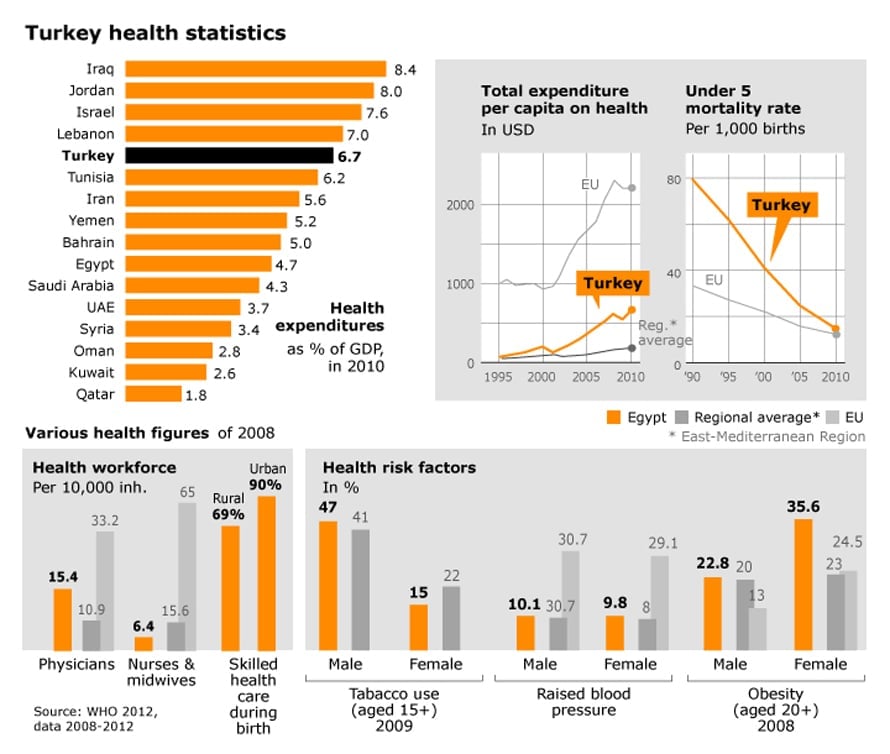
Social Security
The social security system, financed by employee and employer contributions, is under the authority of the Social Security Institution. This system provides its members with insurance against sickness, maternity, work accidents, occupational diseases, invalidity, and old age. It also provides payments after death and unemployment benefits. Members of liberal professions, merchants, and craftsmen, who are required to form professional corporations in their fields, receive insurance from another public institution, the Bağ-Kur. The Republic of Turkey Pension Fund provides insurance for retired civil servants.
Latest Articles
Below are the latest articles by acclaimed journalists and academics concerning the topic ‘Society’ and ‘Turkey’. These articles are posted in this country file or elsewhere on our website:



